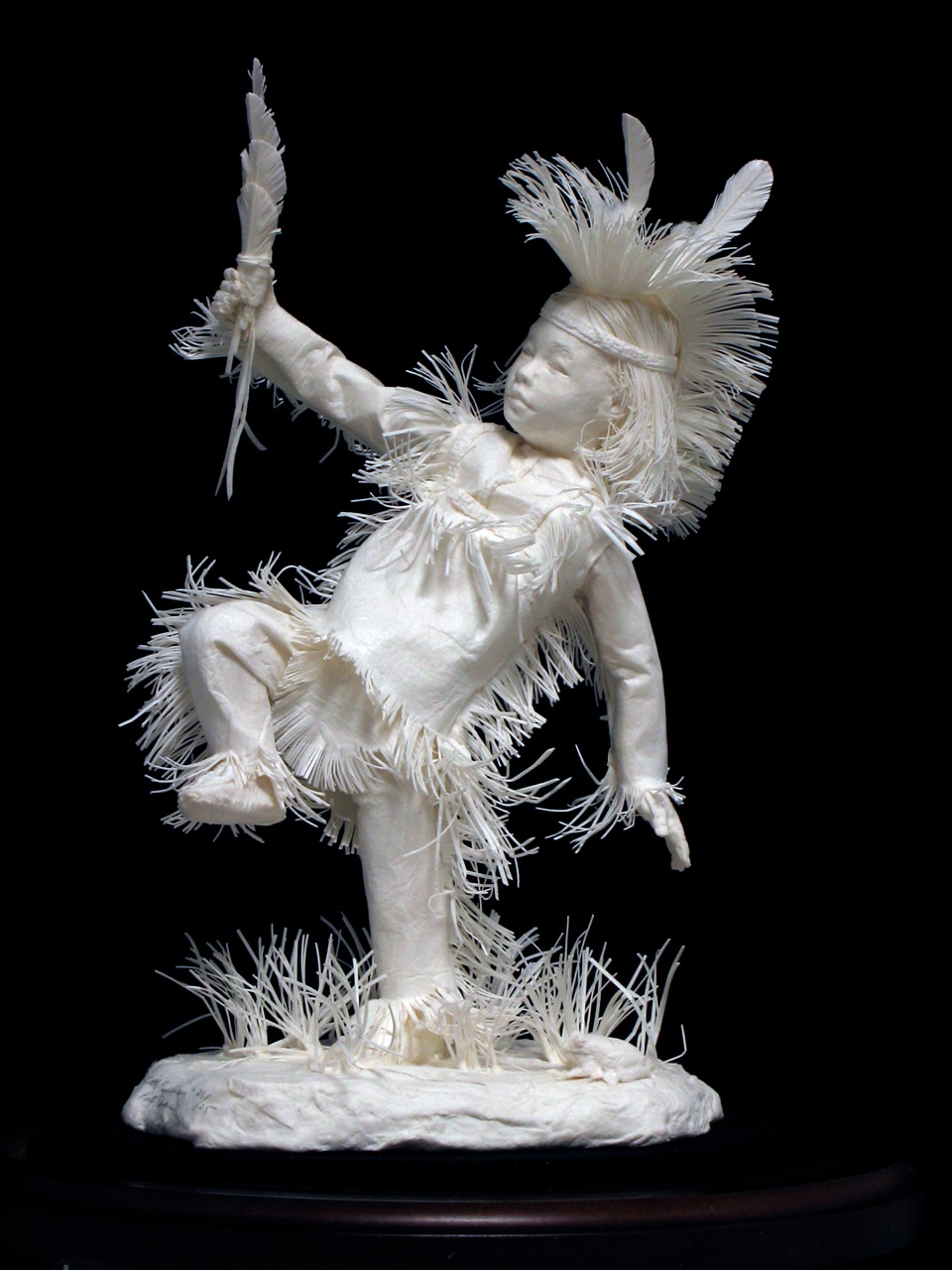 The Artists
The Artists
 Two artists with a shared passion: Paying homage to nature, native culture and the beauty of imitating life.
Two artists with a shared passion: Paying homage to nature, native culture and the beauty of imitating life.From paper come form, elegance and grace.
Cast paper sculpture has been around since the 1950s, originating in Mexico. It should in no way be confused with papier-mâché’. The two mediums are completely different. In cast paper sculpture, the Eckmans first mix an acid-free paper pulp in the studio (“hydro-pulper” from two raw stocks, cotton and abaca). Then, the pulp is cast into silicone rubber molds taken from original sculptures created by Allen and Patty.
The paper is then pressed under vacuum pressure—or by hand—in the mold, where most of the water is extracted at the same time. The drying process is completed by evaporation while the paper is still in the mold. After the dry and hard casts are removed from the molds, the exclusive process of chasing, cast additions, cast alterations, sculpting in paper and detailing begins.
It takes a great amount of time and experience to create each piece. Some works are so painstakingly detailed; they can take many months to complete. The cast paper process is similar to the cast bronze method in many ways. Of course, the finished cast paper product is white, lightweight, and can have an enormous amount of detail due to its properties and the artists’ own inventiveness.
The Eckmans are the inventors of this process. Since 1988, Patty and Allen have developed and perfected the medium of cast paper far beyond any other artists in the world. Their work is considered by many critics to be the premier of the industry. Since the paper is acid-free, the sculptures are all museum quality. “We have really enjoyed the development of our fine art techniques over the years, and have created a process that is worth sharing, said Allen Eckman. “We believe there are many artists and sculptors who will enjoy this medium as much as we have.”
The Eckmans have resided in Rapid City, South Dakota since 1992. Their home and studio are in the beautiful Black Hills. There, the couple finds inspiration everywhere. The wildlife, the history, the climate and the spirituality of their lives provide Patty and Allen with an
enormous amount of creative direction.
Allen’s inspiration for the Indian subjects he creates came from a significant event in his life. “When I was a small boy in Pennsylvania, I found an arrowhead in a newly plowed field. I took it home to my grandfather, who told me we have a Cherokee ancestry,” Allen proclaimed.
“My great, great, great, grandmother’s name was Tounacha-Cherokee Case. She was born in the year 1793 in North Carolina, by the census record. It does not say she was Cherokee because the box on the 1850 census record specifying ethnicity was left blank” he continued. “My guess is that being married to Laxton Case (a white man) at the time of the Indian removal (The Trail of Tears), and living in Cherokee country, was a precarious situation for both of them.”





